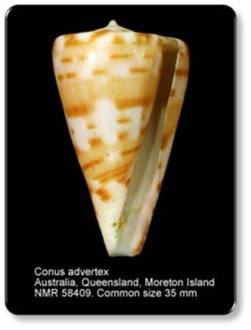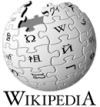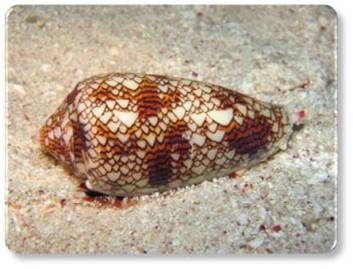
Recognizing deadly Cone Shells...

|
SOURCE: WoRMS
World Register of Marine Species
|
This carnivorous species of sea snail is best known for it's hunting and defense weapons. All of them of are venomous, and since some Conus species are known to cause illness or fatality in humans, it's important to know what to look for on the beach and in the ocean. Aptly named for their conical shells, cone snails can be identified by shape. However, many are camoflauged with a brownish outer shell (periostracum), covered with algae or buried in the sand. They also live in mangroves, on rocks and in tidepools.
Although handling them is not recommended, here is some good advice on how to safely collect cones. Cone snails can be handled by the wide end while paying close attention to the narrow end! Let it go if you see the proboscis extend from the small end.
The proboscis is a long tube which is used to shoot a venomous barbed harpoon (radula) and immobilize prey and reel it in to its mouth. These radula can be shot through collection bags, wetsuits, and gloves, so if it's a live one, do not put it in your bag or pocket or anywhere near your body! If you are injected by a cone snail, seek immediate medical attention. Medical personnel can assist a victim until the toxins weaken, since there is no antivenom available.
Experts recommend beach goers and divers learn to identify the dangerous species in their region. Start your list with C geographus, C textile, and C marmoreus - all known to cause human fatalities. With over 600 species worldwide, species identification can be difficult for the layperson. You can view the 34 known Conus species in Hawaii on Keoki Stenders cone page.
|
|
Animal Tracks Fun Facts...
In this National Geographic video: Poison in a Cone, a cone snail harpoons a much larger fish, injects it's venom and swallows the paralyzed fish whole!! Conotoxins are a cone's venomous cocktail, mixed specifically for each type of prey, just before they strike.
Cone snails are not immune to their own venom, so, if injected by another cone, the paralyzed snail is sucked out by the predator! You can learn about life cycles, habitat, anatomy and other interesting facts in this well documented and illustrated introduction to cone snails [pdf] from theconesnail.com.
|
|
Search the Image Database...

View Mollusc Image Gallery
|
|
Our image database has a growing collection of images from around the world contributed by folks like you. Although we have quite a few Molluscs, we could use more cone shell images. You may also search our image database for plants and animals that interest you.
You could also create an account to share your own images. Our main purpose is to track marine life via digital imagery. We are also dedicated to education and sharing information related to coastal and ocean habitats and inhabitants.
|
Resource Links...

|
|
|

|
|








